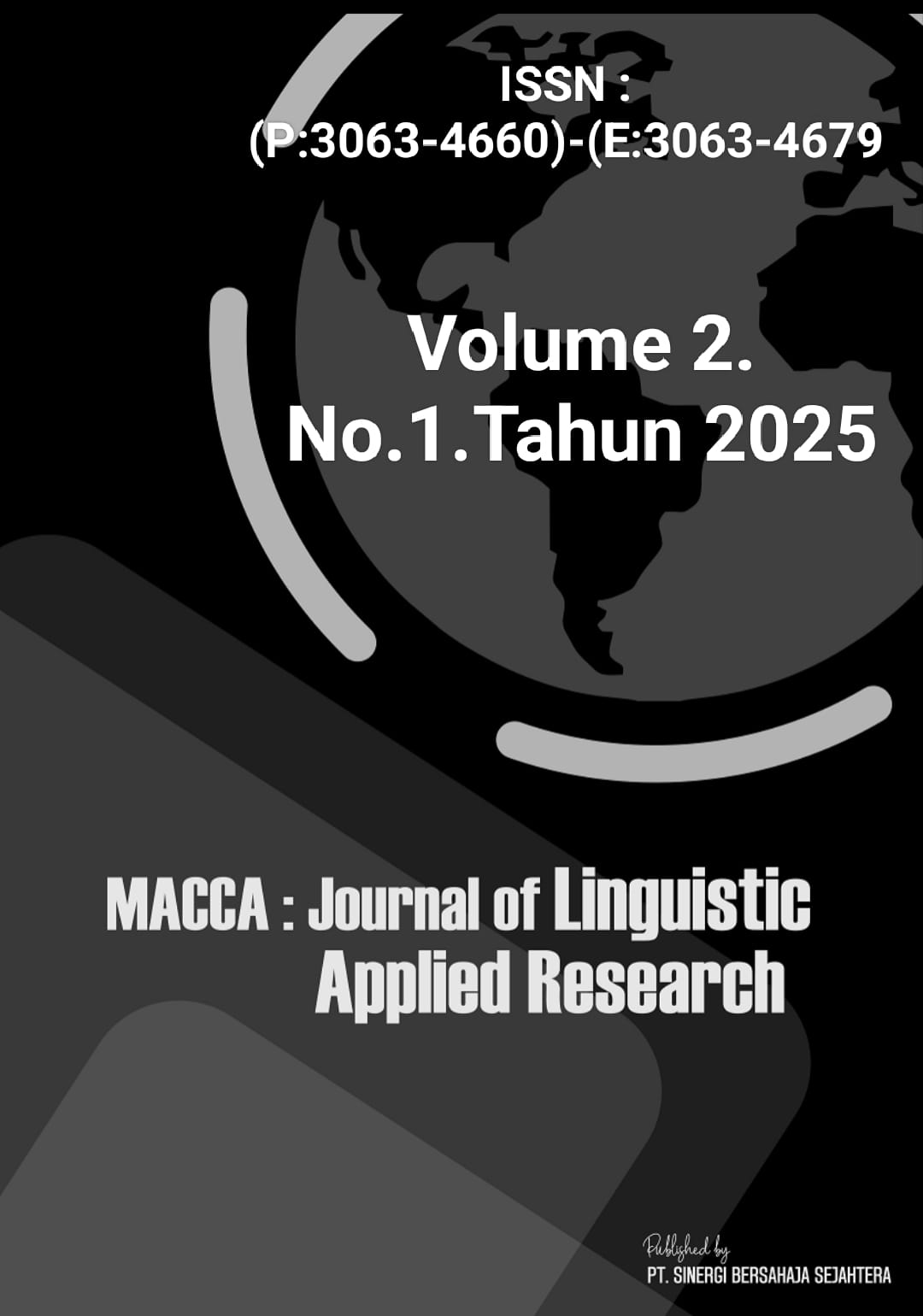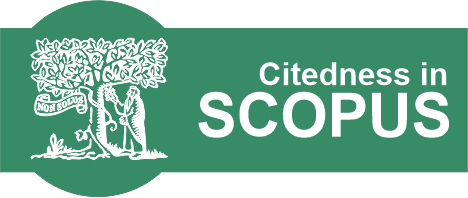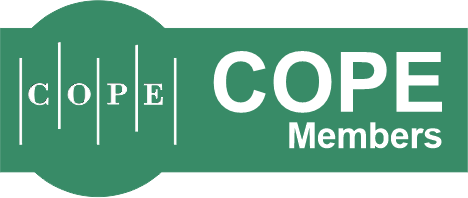Students’ Perception Of Increasing Morphology Competence Through Chatgpt: AI – Based Learning
Keywords:
students’ perceptions, ChatGPT, AI-based learning, morphology competenceAbstract
Improving students’ morphological competence is essential because morphology plays an important role in understanding vocabulary, constructing accurate sentences, and developing overall language skills. However, traditional learning methods often lack personalized support, active engagement, and instant feedback. This study aims to understand students’ perceptions of using AI-based ChatGPT in morphology learning and to explore its perceived advantages and disadvantages. This research employed a qualitative method using questionnaires and in-depth interviews with fourth-semester students of the English Education Study Program. The findings reveal that students generally have a positive perception of ChatGPT as a supportive learning tool. They find it helpful, motivating, and flexible, as it provides clear explanations, practical examples, and real-time feedback that support independent study. Despite these advantages, students also recognize several limitations, such as possible inaccuracies, technical restrictions, and the risk of over-reliance that may reduce their critical thinking skills. In conclusion, students suggest that ChatGPT should be used wisely as a complementary tool alongside lecturers’ guidance and credible academic resources to maximize learning outcomes in morphology
References
Abdullah, A., Asriati, A., & Jabu, B. (2021). Pengembangan bahan ajar morfologi berbasis pendekatan komunikatif pada mahasiswa Jurusan Bahasa Inggris, FBS UNM. Dalam Seminar Nasional Hasil Penelitian 2021: Penguatan Riset, Inovasi, dan Kreativitas Penelitian di Era Pandemi COVID?19 (hlm. xx–xx). Universitas Negeri Makassar. Diakses dari http://eprints.unm.ac.id/id/eprint/28701
Abimanto, D., & Mahendro, I. (2023). Efektivitas Penggunaan Teknologi AI dalam Pembelajaran Bahasa Inggris. Sinar Dunia: Jurnal Riset Sosial Humaniora dan Ilmu Pendidikan, 2(2), 256–266. https://doi.org/10.58192/sidu.v2i2.844
Baši?, Ž., Banovac, A., Kruži?, I., & Jerkovi?, I. (2023). ChatGPT?3.5 as writing assistance in students’ essays. Humanities and Social Sciences Communications, 10, 750.
Dejoux, C., & Léon, P. (2018). [Judul asli artikel]. Dalam Jarrahi, M. H. (2018). Artificial Intelligence and the Future of Work: Human–AI Symbiosis in Organizational Decision Making. Business Horizons, 61(4), 577–586.
Fitria, T. N. (2021). Artificial Intelligence (AI) in Education: Using AI Tools for Teaching and Learning Process. Prosiding Seminar Nasional & Call for Paper STIE?AAS, Surakarta, hlm.?134–147.
Fitria, T.?N. (2023). Artificial intelligence (AI) technology in OpenAI ChatGPT application: A review of ChatGPT in writing English essay. ELT Forum: Journal of English Language Teaching, 12(1), 44–58.
Fromkin, V., & Rodman, R. (1998). An Introduction to Language (6th ed.). Heinle.
Gao, C.?A., Howard, F.?M., Markov, N.?S., Dyer, E.?C., Ramesh, S., Wang, F., & Pearson, A.?T. (2022). Comparing scientific abstracts generated by ChatGPT to original abstracts. npj Digital Medicine.
Ghanizadeh, A., & Jahedizadeh, S. (2015). De?motivators and their association with burnout and language achievement in an Iranian EFL context. Journal of Teaching Language Skills, 7(3), 61–85.
High-Level Expert Group on Artificial Intelligence. (2019). Ethics Guidelines for Trustworthy AI. European Commission.
Jarrahi, M. H. (2018). Artificial Intelligence and the Future of Work: Human–AI Symbiosis in Organizational Decision Making. Business Horizons, 61(4), 577–586.
Miles, M. B., & Huberman, A. M. (2020). Qualitative Data Analysis: An Expanded Sourcebook (4th ed.). SAGE Publications.
Moleong, L. J. (2005). Metodologi Penelitian Kualitatif (Edisi Revisi). Bandung: Remaja Rosdakarya.
Nemoto, T., & Beglar, D. (2014). Developing Likert-scale questionnaires. Dalam N. Sonda & A. Krause (Eds.), JALT2013 Conference Proceedings (hlm. 1–8). Tokyo: JALT.
O’Grady, W., & Archibald, J. (2016). Contemporary Linguistic Analysis: An Introduction (8th ed.). Toronto: Pearson Canada.
Purwo, B.?K. (1990). Pragmatik dan Pengajaran Bahasa: Menyibak Kurikulum 1984. Yogyakarta: Kanisius.
Saeed, J.?I. (1997). Semantics. Wiley?Blackwell.
Sheikh, H., Prins, C., & Schrijvers, E. (2023). Information literacy after the AI revolution. Dalam: Artificial Intelligence: Definition and Background.
Subiyantoro, H., Hartono, R., Fitriati, S. W., & Faridi, A. (2023). Dampak kecerdasan buatan (AI) terhadap pengajaran Bahasa Inggris di perguruan tinggi: Tantangan dan peluang. Prosiding Seminar Nasional Pascasarjana Universitas Negeri Semarang, 6(1), 346–349.
Suharmawan, W. (2023). The Use of ChatGPT in Learning: Benefits and Challenges. Prosiding Seminar Nasional IKJ. Diakses dari https://proceeding.ikj.ac.id/index.php/semnasIKJ/article/view/61
Sugiyono. (2015). Metode Penelitian Kuantitatif, Kualitatif, dan R & D (edisi revisi). Bandung: Alfabeta.
Sugiyono. (2017). Metode Penelitian Kuantitatif, Kualitatif, dan R & D (hlm.?134). Bandung: Alfabeta.
Sugiyono. (2020). Memahami Penelitian Kualitatif (hlm. 247–248). Bandung: Alfabeta.
Sugiyono. (2020). Metode Penelitian Kuantitatif, Kualitatif, dan R & D (hlm. 192). Bandung: Alfabeta.
Valova, I., Mladenova, T., & Kanev, G. (2024). Students’ Perception of ChatGPT Usage in Education. International Journal of Advanced Computer Science and Applications, 15(1). https://doi.org/10.14569/IJACSA.2024.0150143
Widiarto, Y. D., Najoan, M. E. I., & Putro, M. D. (2018). Sistem penggerak robot beroda vacuum cleaner berbasis mini computer Raspberry Pi. Jurnal Teknik Elektro dan Komputer, 7(1), 25–32. https://doi.org/10.35793/jtek.v7i1.19140
Downloads
Published
How to Cite
Issue
Section
License
Copyright (c) 2025 Ulfah Hasbullah, Andi Sadapotto HERMANSYAH, Lababa, syamsu T

This work is licensed under a Creative Commons Attribution-ShareAlike 4.0 International License.



































